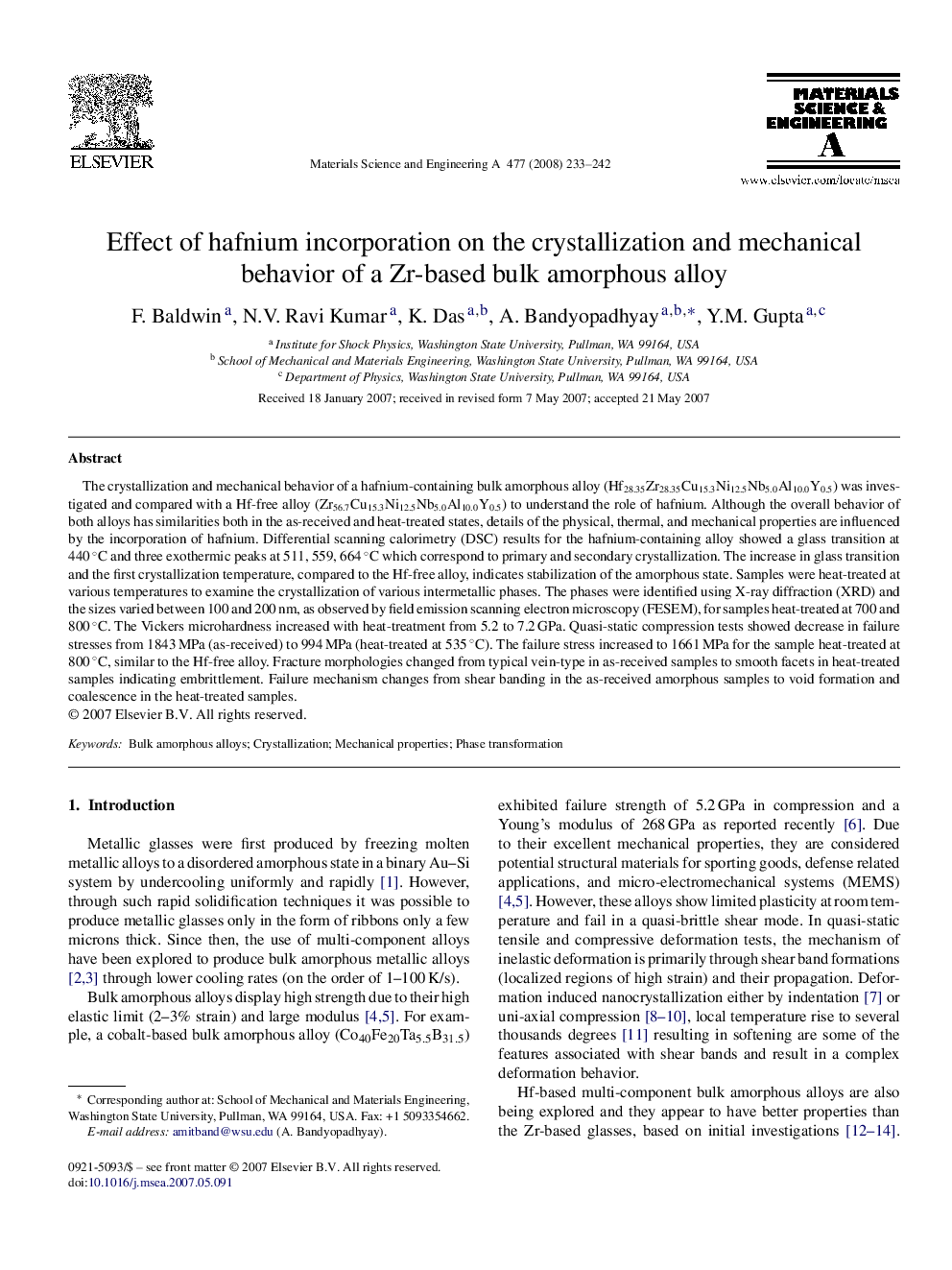| کد مقاله | کد نشریه | سال انتشار | مقاله انگلیسی | نسخه تمام متن |
|---|---|---|---|---|
| 1582898 | 1514879 | 2008 | 10 صفحه PDF | دانلود رایگان |
عنوان انگلیسی مقاله ISI
Effect of hafnium incorporation on the crystallization and mechanical behavior of a Zr-based bulk amorphous alloy
دانلود مقاله + سفارش ترجمه
دانلود مقاله ISI انگلیسی
رایگان برای ایرانیان
کلمات کلیدی
موضوعات مرتبط
مهندسی و علوم پایه
مهندسی مواد
دانش مواد (عمومی)
پیش نمایش صفحه اول مقاله

چکیده انگلیسی
The crystallization and mechanical behavior of a hafnium-containing bulk amorphous alloy (Hf28.35Zr28.35Cu15.3Ni12.5Nb5.0Al10.0Y0.5) was investigated and compared with a Hf-free alloy (Zr56.7Cu15.3Ni12.5Nb5.0Al10.0Y0.5) to understand the role of hafnium. Although the overall behavior of both alloys has similarities both in the as-received and heat-treated states, details of the physical, thermal, and mechanical properties are influenced by the incorporation of hafnium. Differential scanning calorimetry (DSC) results for the hafnium-containing alloy showed a glass transition at 440 °C and three exothermic peaks at 511, 559, 664 °C which correspond to primary and secondary crystallization. The increase in glass transition and the first crystallization temperature, compared to the Hf-free alloy, indicates stabilization of the amorphous state. Samples were heat-treated at various temperatures to examine the crystallization of various intermetallic phases. The phases were identified using X-ray diffraction (XRD) and the sizes varied between 100 and 200 nm, as observed by field emission scanning electron microscopy (FESEM), for samples heat-treated at 700 and 800 °C. The Vickers microhardness increased with heat-treatment from 5.2 to 7.2 GPa. Quasi-static compression tests showed decrease in failure stresses from 1843 MPa (as-received) to 994 MPa (heat-treated at 535 °C). The failure stress increased to 1661 MPa for the sample heat-treated at 800 °C, similar to the Hf-free alloy. Fracture morphologies changed from typical vein-type in as-received samples to smooth facets in heat-treated samples indicating embrittlement. Failure mechanism changes from shear banding in the as-received amorphous samples to void formation and coalescence in the heat-treated samples.
ناشر
Database: Elsevier - ScienceDirect (ساینس دایرکت)
Journal: Materials Science and Engineering: A - Volume 477, Issues 1â2, 25 March 2008, Pages 233-242
Journal: Materials Science and Engineering: A - Volume 477, Issues 1â2, 25 March 2008, Pages 233-242
نویسندگان
F. Baldwin, N.V. Ravi Kumar, K. Das, A. Bandyopadhyay, Y.M. Gupta,